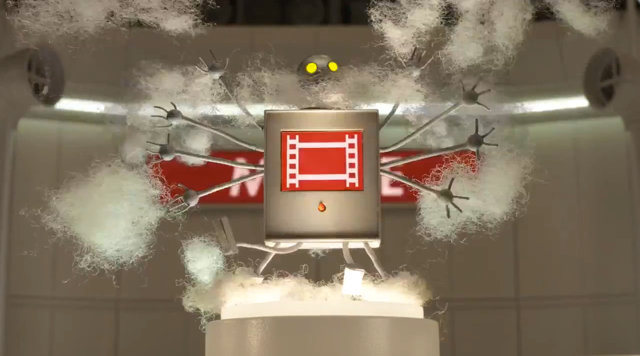In a move surely intended to reignite debate about “selling out” among bloggers, Wes Anderson has directed a new ad for Sony. The ad features a child’s imagining of how a smart phone works, and renders that vision with stop-motion animation, Anderson’s famous dollhouse pans, and smoke made of cottonballs. The answer? Tiny jetpack-armed robots.
Anderson’s last set of ads, for Hyundai, set off quite a bit of back-and-forth in the blogosphere. About a week after we wrote a short post about the ads, Colin Marshall from Open Culture wrote a nice post directors who maintain their integrity while directing commercials. This set off a debate about the (greatly exaggerated) death of the “sellout” on Twitter, and prompted a follow-up from Richard Brody at The New Yorker. While we largely agreed with Marshall and Brody, we wrote another short post maintaining that it’s certainly still possible to “sell out,” and that critics and audiences should reserve the right to call them out for it.
But the debate didn’t end there. Writing for The Guardian, Chris Michael insisted that Anderson’s car ads were in fact sellouts, and that we were all just “wearing brogues and short tight trousers and playing double keyboards in the indie band of intellectuality.” Brody responded once again with a more thoughtful reading of the ads (it’s worth reading). He found that if selling out is when artists “consciously do work that they know to be less than their best for the sake of money or other rewards,” these ads weren’t that.
To my mind, this settles the debate; Brody’s last post was nuanced and right. (Let us know if you disagree in the comments.) Still, it’s worth watching Anderson’s delightful new spot for its own sake. Does the ad, by putting the technology in the light of a child’s sense of wonder, sell a product? Through a layer of irony, but yes. Is that a problem? Not necessarily.
Just like Anderson’s “Talk to My Car” spot, the ad simultaneously presents a childish vision of a seemingly magical product, and then undercuts it. The ad’s humor comes from how ridiculous the eight-year-old’s imagination of the phone is (doesn’t he understand nanotechnology?!), and this absurdity is underlined with the naïve stylings of pop culture past. (Here, those images come from 1950s science fiction, perhaps filtered through homages like The Iron Giant.)
The effectiveness of the ad’s messaging is debatable; perhaps it works better as a short film, than as a commercial. But I don’t think Sony is naïve about that, either. As Pabst Brewing Co. apparently understood when Will Ferrell made ads for them, when you hire a respected name to make an entertaining and even subversive-seeming commercial (for a particularly strong example, see Spike Jonze’s “Lamp” ad for IKEA), you can advertise to people on the Internet without viewers even really thinking of it as advertising. I’ve watched this latest Anderson commercial more than once in writing this post, and at times without the level of guardedness I might typically bring to an ad. I may even have warmer fuzzier feelings about Sony, and will have to make a conscious effort to make sure they don’t bias me towards any inferior product. But all this doesn’t make Anderson’s short a “sellout.” As should be plenty clear by now, something can be commercial and art all at once.
Previously:
Darren Aronofsky’s Kohl’s Ad Proves There Is Such a Thing as Selling Out
Did You See This? Two new Wes Anderson Ads
Wes Is More: Moonrise Kingdom and the Elements of Wes Anderson’s Style
Every Wes Anderson Overhead Shot of Hands, Scored to Music
